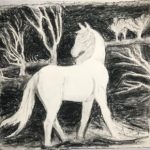Losing Sonia
Deborah Ann Lucas
a watershed moment
wa·ter·shed
1 an area or ridge of land that separates waters flowing to different rivers, basins, or seas.
• an area or region drained by a river, river system, or other body of water.
2 an event or period marking a turning point in a course of action or state of affairs
On Sunday, I knew it was time to let go of my sweet mare Sonia.
I had lived with her and she with me since the day she was born 28 years ago on our ranch in the high desert of California. A few years later, Charlie was born at our place in Utah. Less than a year after, we moved the two of them along with Lance, Ben and Ruby (Sonia’s mom) to our home here in Leaf River, Illinois where Ruby gave birth to Maggie, Sonia’s half-sister. A rescue horse in his thirties named Casper joined us a few years later becoming our seventh horse-family member.
Now only Charlie remains.
Red Sonia get frisky on a cool autumn day, only two days before she collapses in her stall, colicking.
Losing Sonia this week was a shock. The two mornings before, she’d been frolicking in the green pasture like she was a two-year-old, while Charlie, now 25, stood and watched.
It was Saturday evening when she began showing signs of distress. We’d gone out to put the horses up for the night into the barn and as soon as Sonia was in her stall, she went down.
It came on fast.
She was rolling and thrashing and staring at her gut. I immediately called the vet. We guessed it was a gas colic. He said to give her some Bute (horse aspirin) and he’d be out as quickly as possible.
After giving her a squirt of the pain-relieving paste in her mouth, we put on a halter with a lead-rope and urged her up to walk around her stall a few times before she collapsed again. You can’t stop a 1,200 pound animal in pain from doing what they feel they need to do. Up and down she went, over and over again. When she was down, I massaged her belly and hips, trying to get her gut moving to release the gas. We heard a rumble that confirmed our suspicions of gas causing the pain. She even burped up some air, which seemed strange because horses don’t have the ability to vomit. Most of the time with their heads are down below their belly to graze.
Sonia had never colicked before. She had recently recovered from a serious bout of Cushing’s disease, suffering founder on all four feet—her front coffin bones rotating downward inside her hooves. We worked for over a year to help her heal with the support of our vet Dr. Kevin Sugden and our fabulous farrier, Sheldon Olsen. Sonia didn’t like taking her medicine, a little pink pill called Prascend. We had to constantly come up with new ways to get her to swallow it like drilling a hard carrot-or-apple-flavored treat to hide it inside.
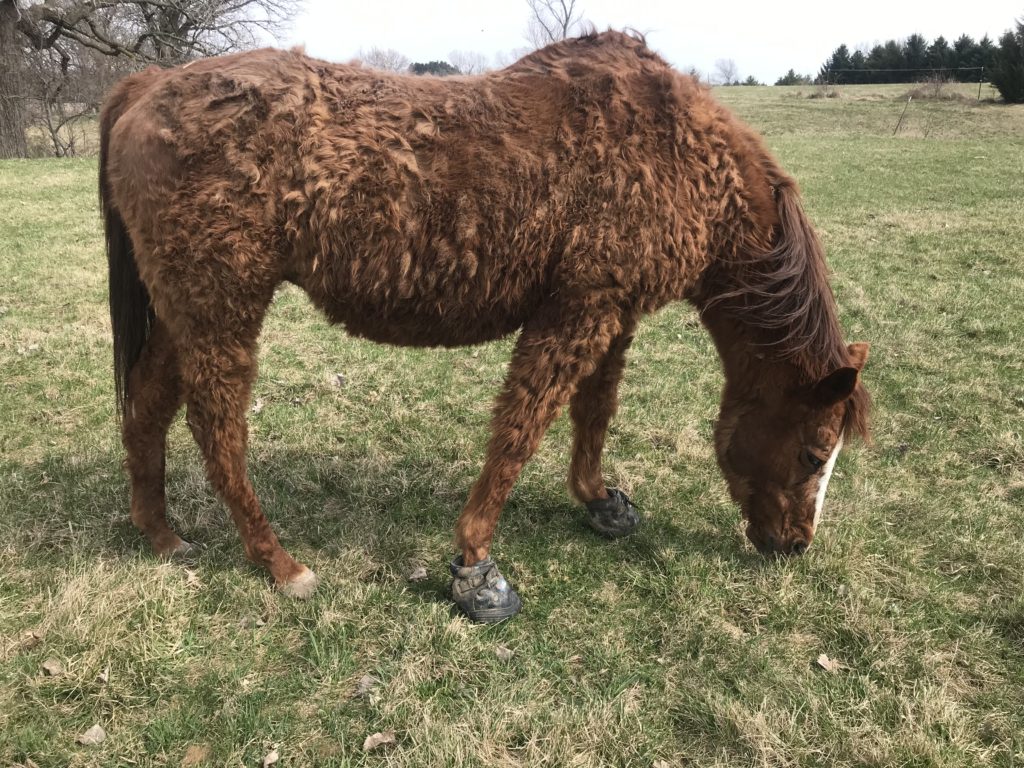
Back in April, Sonia couldn’t shed her winter coat, a symptom of Cushing’s Disease, but we were able to pull her through that.
After a year of treatment, she had improved markedly. Her hooves were still growing out (it takes years to replace the entire hoof-wall), but she no longer limped nor acted like she was walking on hot coals or like her feet were made of concrete attached to the earth, like she just couldn’t lift them. All that was healed.
But on Saturday night, her condition deteriorated fast. She was suffering. We called the vet out and gave her some horse aspirin for a bit of pain relief until he could arrive. When he walked in, she was down and had rolled toward the wall immobilizing herself. He said to leave her because her position allowed him to examine her and to administer some pain-relieving drugs, an IV into her neck, without her moving. We saw her relax a bit, so we rolled her over, untangling her from the wall and left her to sleep. At her age, the vet said, she’d either recover by morning or she’d be dead. I wasn’t shocked. I already knew it was a possibility.
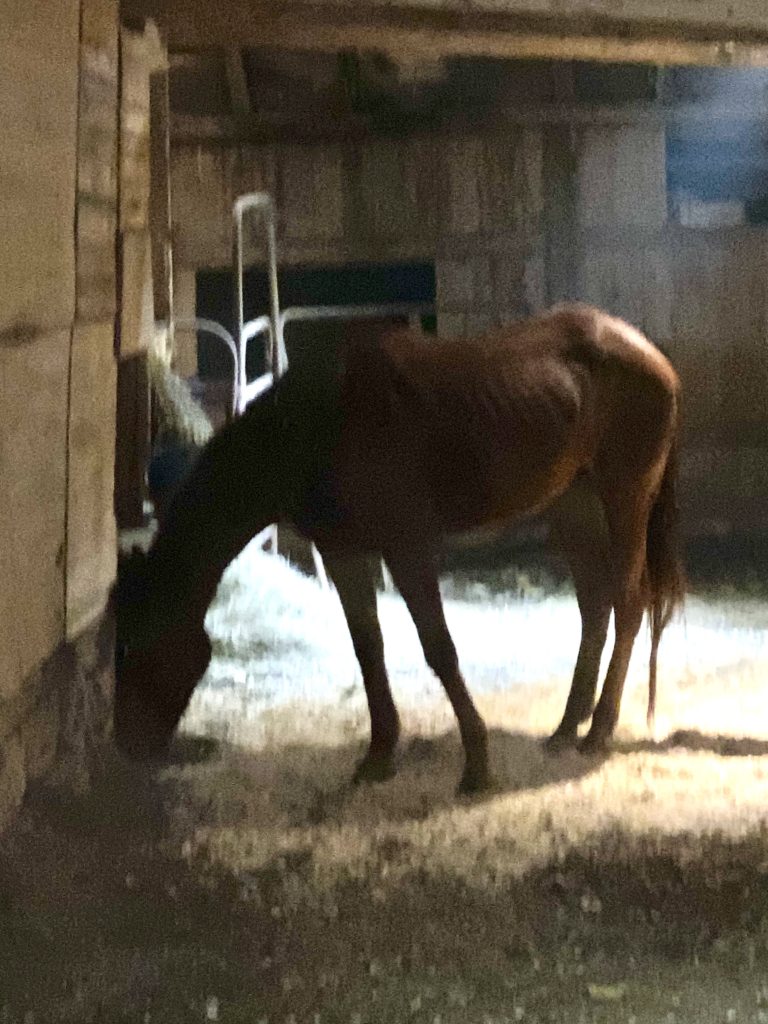
I checked on her a few hours later and found her up, nibbling on some hay that I left so I gave her some more. On my next check a few hours later, she was lying down again. She looked somewhat comfortable, so I let her sleep and went to bed.
Early Sunday morning, we went out to check on her. She was alive and was still suffering, but now it was even worse. She was lying down in a different place and had left us hoof prints in the sand footing, evidence she’d been up during the night. I stroked her face, neck and belly. She lifted her head a bit and moaned, and every few seconds, she moaned again. There was blood on the inside of her lips, like she had coughed it up. Seeing her in so much pain was breaking my heart. This was much more than a gas colic. This was major.
She was 28, equal to 80 of our years. I couldn’t let her suffer anymore. So, we called the vet.
While Greg went in to grab us some coffee, I waited with her. When Sonia got up again, I walked her outside into the sunlight. She took a few nibbled of grass which made me happy, but only for a brief moment. I knew what was coming. I knew she was near the end of her life.
A few moments later, she was down again, moaning. When the vet arrived, he confirmed our suspicions. It was time to let Sonia go. She died with the help of medicine, easing into a forever sleep, and is now buried next to her sister.
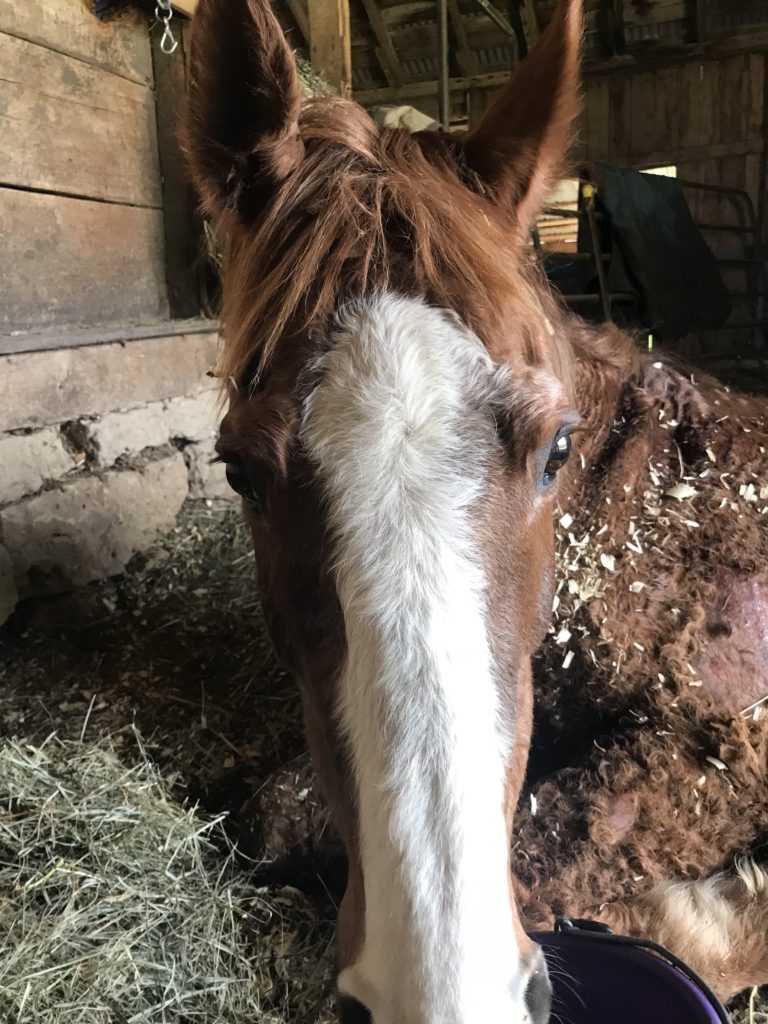
I will write more about my life with Sonia, Maggie and Charlie, and all the others in the coming weeks and months, but not today. Today, I need to mourn…this as a major Watershed Moment in my life. I’ve had horses in my backyard for over 30 years. Will I continue keeping them, even though I have struggled in recent years with my own aging issues, keeping me from spend as much time with them as I would have liked?
In other words, will I find a new horse to be a companion for Charlie? He is 25 and has multiple illnesses. He struggles to keep his balance because he has EPM, a disease where a Protozoa has attacked his nervous system, cutting off the feeling to his legs. He doesn’t know where they are and a horse’s worst fear is falling because that is their most vulnerable position.
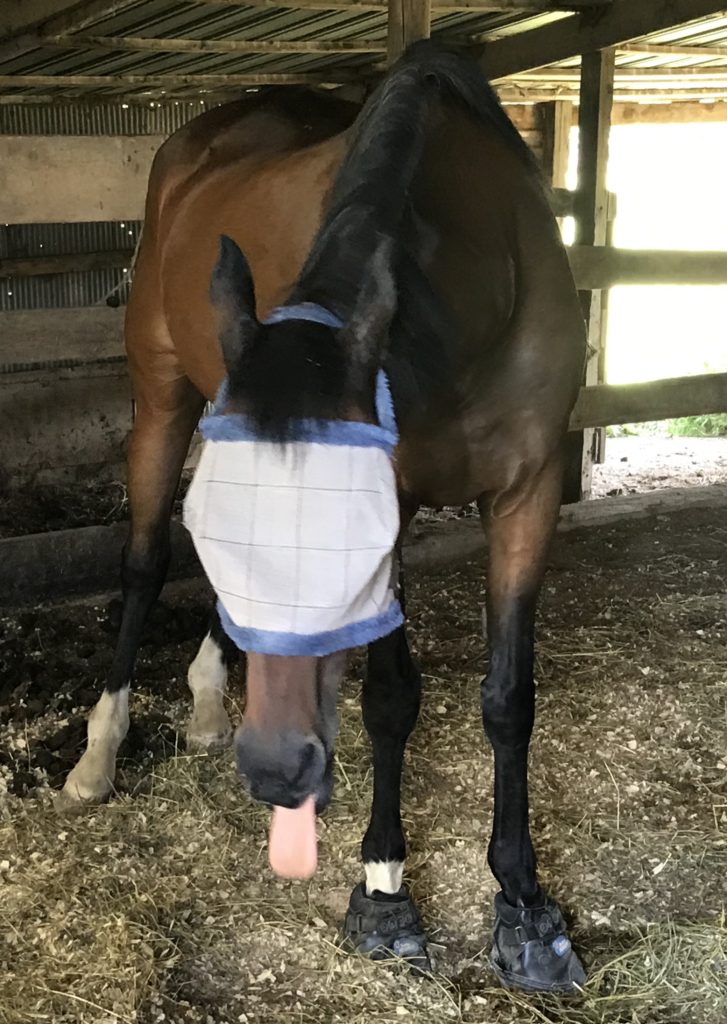
We have killed the pest in Charlie’s system with medicine in the four months since he was diagnosed, but he still needs to grow back those nerves and I have no idea if or when that will happen even though we are giving him tons of medicine to help him along. He also struggles to breathe, worse this time of year with all the pollen in the air, because he has COPD or heaves. In other words, Charlie is struggling. But the biggest problem he has now is that he is alone. He’s watched his entire family of horses die:
Lance, Ruby, Ben, Casper, Maggie and now Sonia.
Horses are herd animals. The others keep guard when one is sleeping. When they are alone, they are vulnerable and they get depressed. But if I get him a companion, then when one of them dies, I’ll need another. Can I manage to care for more horses? The vet suggested I give Charlie away to someone who has lots of horses, but I will never do that. It would be giving away my child. He is named after my brother Chuck, the focus of my first memoir. When I lose a horse he’d known and loved, I experience the loss of my brother all over again, along with the rest of my family who are now all gone.
I see this time in my life as a ridge of land separating the waters of my past and my future, a turning point, a time when I must choose what shape my life will take in the months and years to come. I have many interests: art quilting and clay as well as my writing and photography. But my life, my art and my writing have all centered around my life with horses. Will I be able to bear a life without them?
How will I decide? What life will I choose? Right now I don’t know, but I’ll keep you posted.
* * *
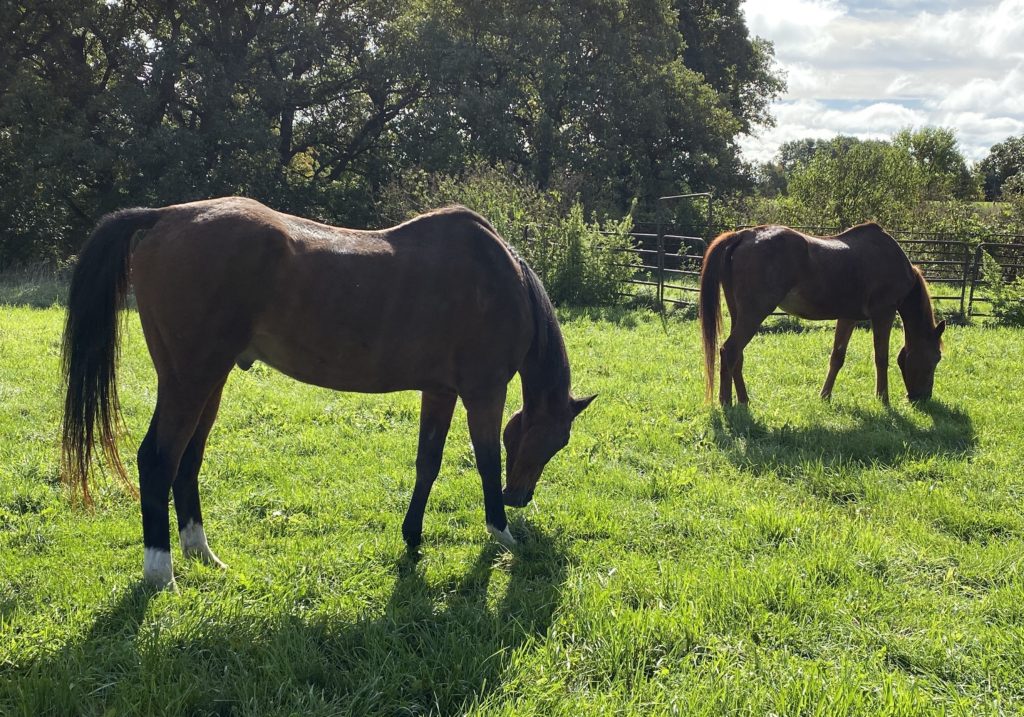
If you took the time to read all of this post, thank you. It means a lot. And if you skipped to the bottom, I understand. I’ll try to post shorter posts in the future, but they will encompass my love of horses, dogs, and cats. And living on the land—like planting trees and composting kitchen waste into rich black soil so that I can grow summer vegetables to eat all winter long.
And, if you are interested, please sign up to receive my newsletters in your email. If you already have and enjoy what I have to say—my artist, tree-hugger view of the world—then please share it with a friend. I can’t say I’ll always be regular with posts, but I will try to post at least twice a month.
I am currently working on three books, four if I include my horse book with essays and poems matched with my art and photography. So, I’ll try to keep you posted on their progress as well.
Welcome to my stories from Down the Long Lane Farm.
